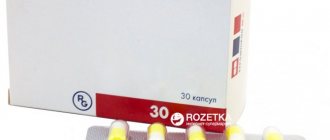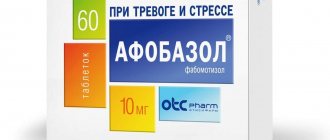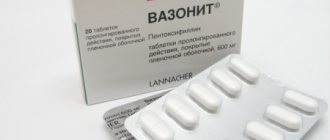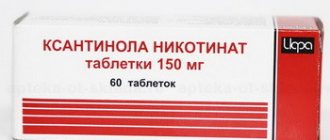pharmachologic effect
Torsemide is a loop diuretic. The main mechanism of action of the drug is due to the reversible binding of torasemide to the sodium/chlorine/potassium ion contransporter located in the apical membrane of the thick segment of the ascending loop of Henle, as a result of which the reabsorption of sodium ions is reduced or completely inhibited and the osmotic pressure of intracellular fluid and water reabsorption are reduced. Torsemide blocks myocardial aldosterone receptors, reduces fibrosis and improves myocardial diastolic function.
Due to its antialdosterone action, torasemide causes hypokalemia to a lesser extent than furosemide, while it is more active and its action lasts longer.
The diuretic effect develops approximately an hour after oral administration, reaching a maximum after 2-3 hours, and lasts up to 18 hours, which facilitates the tolerability of therapy due to the absence of very frequent urination in the first hours after taking the drug orally, which limits the activity of patients.
Torsemide reduces systolic and diastolic blood pressure in the “lying” and “standing” positions.
The use of torasemide is the most reasonable choice for long-term therapy.
Torasemide or Diuver – which is better?
Manufacturer: PLIVA HRVATSKA (Croatia)
Release form: tablets
Active ingredient: torasemide
Diuver is an analogue of Torasemide 10 mg. Both medications have the same active substances and mechanism of action. Diuver differs from the base Torasemide in the composition of auxiliary ingredients and their quantity.
Both drugs effectively relieve edema, but according to doctors, Torasemide is more often prescribed, since the medication is more affordable, effectively relieves heart pain and maintains blood pressure at optimal parameters.
Directions for use and doses
Inside, once a day, without chewing, with a sufficient amount of water. The tablets can be taken at any convenient time, regardless of meals.
Edema syndrome in chronic heart failure
The usual starting dose is 10-20 mg once daily. If necessary, the dose can be doubled until the desired effect is obtained.
Edema syndrome in kidney disease
The usual starting dose is 20 mg once daily. If necessary, the dose can be doubled until the desired effect is obtained.
Edema syndrome in liver disease
A typical starting dose is 5-10 mg once daily. If necessary, the dose can be doubled until the desired effect is obtained.
The maximum single dose is 40 mg; it is not recommended to exceed it (there is no experience with use).
The drug is used for a long period or until swelling disappears.
Arterial hypertension
The starting dose is 2.5 mg (1/2 5 mg tablet) once daily. If there is no therapeutic effect within 4 weeks, the dose is increased to 5 mg once a day. If there is no adequate reduction in blood pressure when taken at a dose of 5 mg once a day for 4-6 weeks, the dose is increased to 10 mg once a day. If a dose of 10 mg does not give the required effect, an antihypertensive drug of another group must be added to the treatment regimen.
Elderly patients do not require dose adjustment.
Torasemide's analogs
The pharmacy chain receives a large number of both imported analogues of Torasemide and from domestic manufacturers. These medications have equivalent indications and therapeutic effects. They are sold to patients in the form of:
- generics;
- synonyms;
- combination medications.
Such a variety of analogues and substitutes for the drug Torasemide significantly expands the capabilities of doctors in the treatment of serious chronic diseases complicated by edematous syndrome.
Table of Torasemide analogues with price and country of origin.
| Analogs | Cost in rubles | Manufacturer country |
| Torasemide | 95-220 | Russia |
| Furosemide | 20-30 | Russia |
| Diuver | 300-810 | Croatia |
| Veroshpiron | 65-300 | Hungary |
| Indapamide | 15-40 | Russia |
| Trigrim | 215-500 | Poland |
| Britomar | 310-500 | Spain |
| Hypothiazide | 50-100 | Hungary |
| Spironolactone | 45-70 | Russia |
| Triampur | 325-380 | Germany |
| Diakarb | 260-300 | Poland |
Prices for Torasemide analogues fluctuate over a wide range. A large selection of drug substitutes is an important point in the treatment practice of serious patients with chronic failure of organ function, accompanied by edema.
What else can replace Torasemide? You can supplement the list of diuretics with the following drugs:
- Lasix;
- Lotonel;
- Mannitol;
- Hydrochlorothiazide;
- Thorasemid canon;
- Arifon;
- Espiro.
Analogs of Torasemide tablets are prescribed strictly by a doctor. Uncontrolled use of diuretics can lead to worsening of the condition and aggravation of the chronic course of the disease.
Contraindications
- hypersensitivity to torasemide or to any of the components of the drug;
- allergy to sulfonamides (sulfonamide antimicrobial agents or sulfonylureas);
- renal failure with anuria;
- hepatic coma and precoma;
- refractory hypokalemia;
- refractory hyponatremia;
- hypovolemia (with or without arterial hypotension) or dehydration;
- pronounced disturbances in the outflow of urine of any etiology (including unilateral damage to the urinary tract);
- glycoside intoxication;
- acute glomerulonephritis;
- sinoatrial and atrioventricular blockade of II-III degree;
— decompensated aortic and mitral stenosis;
— hypertrophic obstructive cardiomyopathy;
- increased central venous pressure (over 10 mm Hg);
- arrhythmia;
— chronic renal failure with increasing azotemia;
- hyperuricemia;
- age under 18 years (safety and effectiveness have not been established);
- pregnancy;
- period of breastfeeding;
- simultaneous use of aminoglycosides and cephalosporins;
- lactose intolerance, lactase deficiency or glucose-galactose malabsorption.
Carefully
- arterial hypotension;
- stenosing atherosclerosis of cerebral arteries;
- hypoproteinemia;
- disturbances in the outflow of urine (benign prostatic hyperplasia, narrowing of the urethra or hydronephrosis);
- history of ventricular arrhythmia;
— acute myocardial infarction (increased risk of developing cardiogenic shock);
- diarrhea;
- pancreatitis;
- hypokalemia;
- hyponatremia;
- liver dysfunction, liver cirrhosis, renal failure, hepatorenal syndrome;
— diabetes mellitus (decreased glucose tolerance);
- gout, predisposition to hyperuricemia;
- anemia;
- simultaneous use of cardiac glycosides, corticosteroids and adrenocorticotropic hormone (ACTH).
Torasemide or Veroshpiron – which is better?
Manufacturer: Gedeon Richter (Hungary)
Release form: tablets
Active ingredient: spironolactone
Veroshpiron is a potassium-sparing diuretic. It is used most often as part of complex therapy or as a prophylactic agent for hypokalemia.
Torsemide is considered a better and stronger medication, which more effectively relieves swelling, normalizes blood pressure and symptoms in chronic pathologies of the heart, lungs, and kidneys.
special instructions
The drug LOTONEL® is used strictly as prescribed by a doctor.
Patients with hypersensitivity to sulfonamides and sulfonylureas may have cross-sensitivity to torsemide.
For patients receiving high doses of torasemide over a long period, a diet with sufficient salt content and the use of potassium supplements are recommended to avoid the development of hyponatremia, hypokalemia and metabolic alkalosis.
The risk of hypokalemia is greatest in patients with liver cirrhosis, increased diuresis, insufficient dietary electrolytes, and concomitant use of corticosteroids or ACTH.
An increased risk of developing fluid and electrolyte imbalances is observed in patients with renal failure. During a course of treatment with LOTONEL®, it is necessary to periodically monitor the content of electrolytes in the blood plasma (including sodium, calcium, potassium, magnesium), acid-base status, concentration of residual nitrogen, creatinine, uric acid and, if necessary, carry out appropriate corrective therapy ( with a higher frequency in patients with frequent vomiting and against the background of parenteral administration of fluids).
In patients who have developed fluid and electrolyte disturbances, hypovolemia, or prerenal azotemia, laboratory findings may include: hyper- or hyponatremia, hyper- or hypochloremia, hyper- or hypokalemia, acid-base imbalance, and increased plasma urea concentrations. If these deviations from laboratory parameters occur, it is necessary to stop taking LOTONEL® until normal values are restored, and then resume treatment with LOTONEL® at a lower dose.
If azotemia and oliguria appear or worsen in patients with severe progressive kidney disease, it is recommended to suspend treatment with LOTONEL®.
The selection of a dosage regimen for patients with ascites against the background of liver cirrhosis should be carried out in a hospital setting (violations of water and electrolyte balance can lead to the development of hepatic coma). This category of patients requires regular monitoring of blood plasma electrolytes.
The use of the drug LOTONEL® may cause an exacerbation of gout.
In patients with diabetes mellitus or with reduced glucose tolerance, periodic monitoring of glucose concentrations in the blood and urine is required.
In unconscious patients with benign prostatic hyperplasia and narrowing of the ureters, diuresis control is necessary due to the possibility of acute urinary retention.
In patients with diseases of the cardiovascular system, especially those taking cardiac glycosides, diuretic-induced hypokalemia can cause the development of arrhythmias.
Impact on the ability to drive vehicles and machinery
During the treatment period, patients should refrain from driving vehicles and engaging in other potentially hazardous activities that require increased concentration and speed of psychomotor reactions (risk of dizziness and drowsiness).
Triampur
Manufacturer: Menarini-von Heiden (Germany)
Release form: tablets
Active ingredient: hydrochlorothiazide, triamterene
Triampur is a combined medication that has a diuretic and hypotensive effect. The Torasemide analogue is widely used in therapeutic practice.
This remedy lowers blood pressure and removes excess fluid from the body, the appearance of which can be caused by heart failure, nephrotic syndrome, and cirrhosis of the liver.
Overdose
Typical symptoms are unknown. Overdose can cause severe diuresis, including the risk of excessive loss of water and electrolytes, drowsiness, amentia syndrome (a form of impaired consciousness), symptomatic arterial hypotension, cardiovascular failure and disorders of the digestive system.
Treatment of overdose.
A specific antidote is unknown.
Symptoms of intoxication disappear, as a rule, when the dosage is reduced and the drug is discontinued and with appropriate replacement of fluids and electrolytes ( monitoring must be carried out!
). Torsemide is not removed from the blood by hemodialysis. Treatment in case of hypovolemia: fluid volume replacement. Treatment in case of hypokalemia: administration of potassium supplements. Treatment of cardiovascular failure: position the patient lying down and, if necessary, prescribe symptomatic therapy.
Anaphylactic shock (emergency measures).
At the first appearance of skin reactions (such as, for example, urticaria or redness of the skin), the patient’s agitated state, headache, sweating, nausea, cyanosis, vein catheterization should be performed; Place the patient in a horizontal position, ensure free flow of air, and administer oxygen. If necessary, administer epinephrine, fluid volume replacement solutions, and glucocorticoid hormones.
About interactions with other drugs
Having studied the instructions for use of Torasemide (5 mg and 10 mg), you can pay a little attention to this topic. The parallel use of this medication and cardiac glycosides usually increases the sensitivity of the myocardium, since potassium or magnesium deficiency occurs.
It is important to note that Torasemide is a drug that enhances the effect of antihypertensive drugs, including ACE inhibitors. Severe hypotension may result. This condition can be prevented by adjusting the dose of one of the medications.
Also, the risk of developing potassium deficiency increases if the patient combines Torasemide with drugs related to mineralocorticoids, glucocorticoids or laxatives.
Also, as a result of taking this medication, the effectiveness of antidiabetic drugs, Epinephrine and Norepinephrine (vasoconstrictors), is reduced.
With caution, you should take the drug "Torasemide" together with aminoglycosides, cephalosporins and drugs containing platinum. Under its influence, they can begin to have nephrotoxic or ototoxic effects.
In addition, Torasemide increases the effectiveness of salicylates, Theophylline and curare-like muscle relaxants. If a diuretic is taken together with Probenecid and NSAIDs, then it must be taken into account that they weaken its effect. Just like "Colestyramine", which reduces the absorption of torsemide.
It is not recommended to combine it with lithium preparations. Otherwise, the content of this substance in the blood will increase, which may lead to cardiotoxicity and neurotoxicity.
Diakarb
Manufacturer: POLFARMA (Poland)
Release form: tablets
Active ingredient: acetazolamide
Diacarb belongs to the group of diuretics. The action of this medication is associated with slowing down the biochemical reactions of the enzyme carbonic anhydrase, which takes part in the metabolic processes of carbonic acid.
The medication is used for mild or moderate edema, epilepsy accompanied by increased intracranial pressure, and glaucoma.
A properly selected Torasemide analogue, taking into account the characteristics and stage of development of chronic pathology, will help relieve edema, relieve stress on the heart and improve the patient’s condition.
Name
Tradename
Torasemid-SZ.
International nonproprietary name
Torsemide.
Latin name
Torasemidum.
The principle of action of the drug is determined by inhibition or reduction of the reabsorption of sodium ions.
Side effects
Having figured out what Torasemide tablets help with, it is worth studying the reactions that can result from taking this drug in increased dosages or despite contraindications.
The most common side effects are:
- Dizziness, headaches.
- Drowsiness.
- Abdominal pain.
- Diarrhea.
- Frequent urge to urinate, especially at night.
The following phenomena are observed less frequently:
- Leg cramps.
- Increased cholesterol and triglycerides in the blood.
- The appearance of a strong feeling of thirst.
- Increased heart rate.
- Cardiopalmus.
- Nosebleeds.
- Increase in the number of platelets in the blood.
- Increased fatigue.
- Weakness or hyperactivity.
- Excessive irritability.
The most rare, but still common side effects are:
- Anemia, a decrease in the number of red and white blood cells in the blood.
- Vision problems.
- Weakening the body's sensitivity to glucose.
- Fainting and disturbances of consciousness.
- Burning and tingling in the lower extremities.
- Sudden “jumps” in blood pressure.
- Thromboembolism and thrombosis.
- Hearing problems, tinnitus.
- Nausea, vomiting, decreased appetite.
- Deterioration of potency in men and weakening of libido in women.
- A decrease in urine output per day, the appearance of blood impurities in the urine, a large amount of creatinine and urea in the blood.
- Increased skin sensitivity to ultraviolet radiation.
- Dermatitis, purpura, rash.
- Slow dehydration.
- Increased risk of thrombosis.
- Decrease in all blood parameters.
- Muscle weakness.
The instructions for use of Torasemide note that with an unauthorized increase in dose and uncontrolled use, an overdose is possible. It is indicated by excessive urination, a decrease in circulating blood volume, indigestion, as well as confusion, drowsiness and low blood pressure.
In such cases, it is necessary to rinse the patient’s stomach and induce vomiting. If the condition is serious, then the person must be laid on a horizontal surface, make sure that he is getting enough air, and provide oxygen, if something happens.
It is imperative to replace lost fluid with special solutions. But doctors are already doing this, just like administering hormonal drugs, which are necessary in some cases.
There is no antidote and there are no indications for hemodialysis. But you will have to either reduce the dose or mark the intake of the drug.
Compound
active ingredient:
torasemide;
1 tablet contains torasemide 5 mg or 10 mg;
Excipients:
lactose monohydrate, corn starch, colloidal anhydrous silicon dioxide, magnesium stearate.
Dosage form.
Pills.
Basic physical and chemical properties:
tablets are white or almost white, oblong in shape, scored and chamfered on both sides.
Pharmacotherapeutic group.
Diuretics. Highly active diuretics.
ATX code S0ZS A04.
Reviews
They should also pay a little attention. The drug shows good results if the patient follows the instructions for use of Torasemide. In the reviews, people who took it speak positively about the product.
They claim that the product removes stagnant liquid from the body within 20-30 minutes after taking the tablet orally. It is advisable to be within walking distance of the toilet in the next 3-4 hours, since the urge to urinate occurs frequently and is not false.
The visual effect is also noticeable. Some people say that after Torasemid they literally “deflated” before their eyes - the swelling went away, and the so-called “ears” on the hips of women dissolved.
The effect was observed in all people who used the product in accordance with the instructions for use. Reviews of Torasemide tablets also say that this drug, unlike other popular medications, does not cause unpleasant phenomena such as increased acidity and a feeling of “twisting” in the stomach.
The effectiveness of the drug is also noted by those patients who initially consulted a doctor with a problem related to blood pressure. Of course, they were prescribed complex treatment, necessarily supplemented with a diuretic, “Torasemide” in particular. Patients are surprised to note that already some time after starting therapy according to the prescribed regimen, they noticed an impressive result - they began to feel like truly healthy people.
By the way, very often “Torasemide” is compared with “Furosemide”. And he wins on many counts. Here are the benefits noted not only by patients, but also by doctors:
- It is safer and more effective.
- "Torasemide" is characterized by greater bioavailability.
- The medication does not greatly affect the water-electrolyte balance, as well as the concentration of potassium and lipids.
- It has a longer action.
And in general, Torasemide does not have many side effects. And it may not seem so when looking at the list presented above, but it really is so. All were listed, including those that almost never occur. Furosemide causes unwanted reactions in the body more often.
By the way, Torasemide is often prescribed as a replacement for this drug. If you study people's reviews, you can understand that many had the same situation: they took Furosemide, and there really was a result. But as soon as the patients stopped the course, the swelling returned, often even more voluminous.
Of course, therapy in such situations must be continued, but obviously not with the same remedy. After replacing with Torasemide, almost no one experienced such reactions. You just need to discontinue the drug wisely - gradually reducing the dosage until you stop taking it completely.








